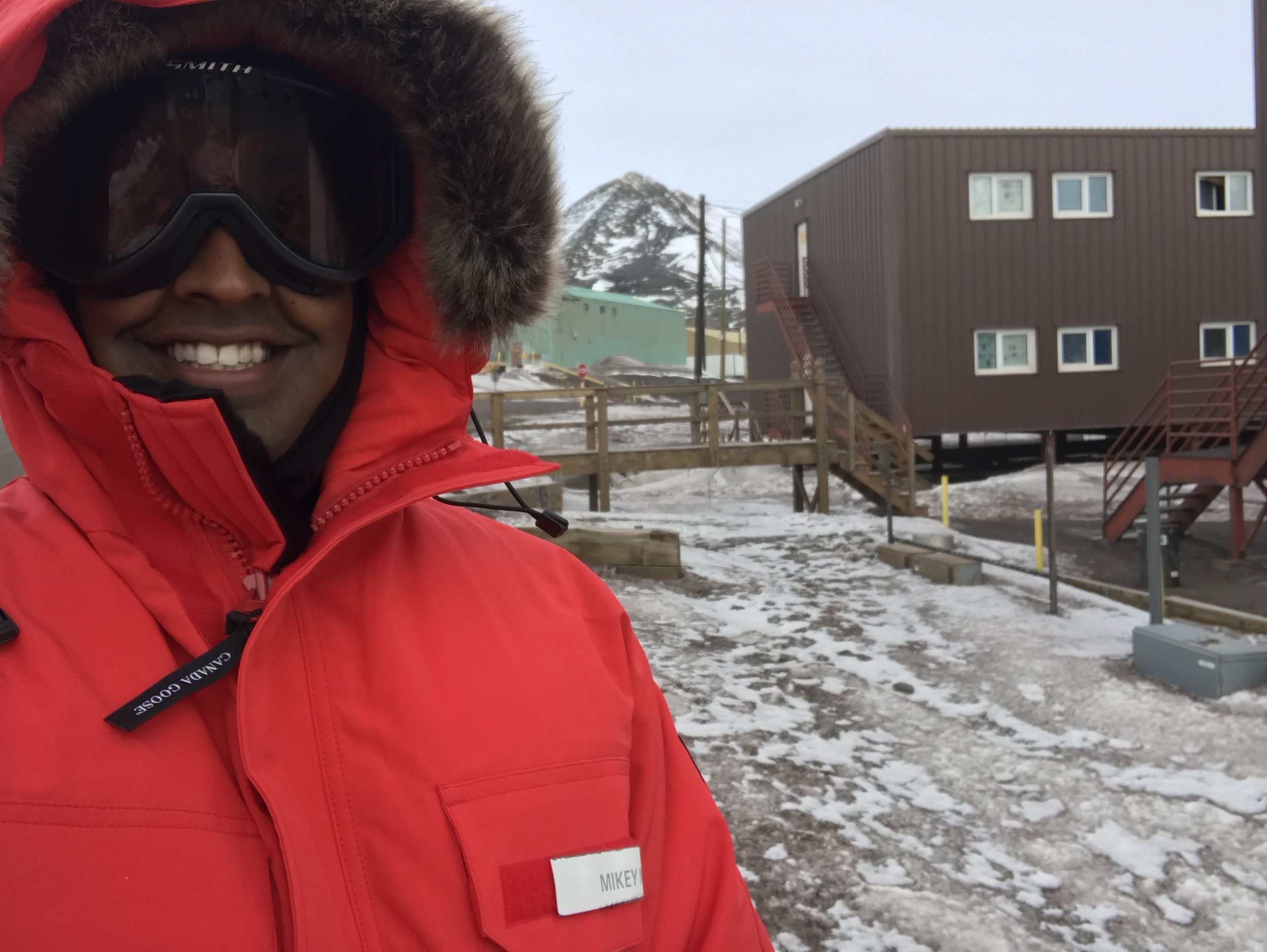Antarctica 2018: Chapter 7: Exploring McMurdo Station
Link to Chapter 6: Touchdown Antarctica
Link to Chapter 5: Flight Day!
Link to Chapter 4: ECWs
Link to Chapter 3: Christchurch!
Link to Chapter 2: Auckland
Link to Chapter 1: From Hawaii to Antarctica
McMurdo Station, Antarctica!
The beating heart of the US Antarctic Program, this Station is also the largest on the continent. Almost every expedition to a remote field camp (a location on the ice that isn’t Palmer, MacTown, or Pole) is launched from here. MacTown is like a small mining town, in some ways, during the summer. MacTown is the only experience of Antarctica that most grantees and contractors have. Sitting in the shadow of the active volcano Mt. Erebus, and the appropriately named adjacent Mt. Terror, just down the road from NZ’s Scott Base, MacTown is quite an interesting place.
So let’s go on a small walking tour!
Setting off for an old-fashioned walkabout, one of many I took during my time in MacTown. In the background, to the right, you can see the dormitory where I was housed during my stay.
Views of the Mac dormitories. This series of brown buildings is where most people live.
Another view of the Mac dorms. Most rooms are shared — mine had a total of four people.
As you can see, there isn’t a lot of snow. Not because there isn’t any, but because the roads are maintained fanatically by working crews. The temperature was a pretty ‘warm’ (certainly by Pole standards) -10 deg C, or 14 deg F. A basic winter’s day in Minnesota, if you’re into that sort of thing.
From some angles, MacTown looks like any other small town. I found this to be a particularly suburban angle, reminding me of houses in South Boston, right down to the dirty ice on the step. The only thing that distinguishes Mactown is the dramatic white in the background.
The only building in MacTown that looks like what it is: The McMurdo Chapel, appropriately named Chapel of the Snows. This is the only stand-alone church on the continent. I would have wanted to attend a service here, for many reasons including the novelty of mass on the seventh continent, but I left MacTown very early on a Sunday morning.
The place that keeps MacTown moving: the Vehicle Maintenance Facility. From snowmobiles to massive trucks to Ivan the Terra Bus, these vehicles are crucial to keeping a station with almost a thousand residents moving smoothly.
The MacTown firehouse! Fire is a very big deal on Antarctica. There are several highly flammable accelerants everywhere, since the backbone of every Station is JP8, the same chemical that jet airplanes run on. But in MacTown, the firehouse is more than just firefighting. They are the central hub for issues ranging from search and rescue, hiking permits and beacon tracking… even if you have a noisy neighbor who won’t let you sleep.
The blue building, or Building 155, is the beating heart of MacTown. This is the location of the galley (dining room), the computer lab, the housing office, some transient dorms, and a lot more. Tellingly, the two bars in MacTown (yes, it has two!) are to the immediate left and right of 155. To the immediate left of where I am standing to take this picture is the location for “bag drag” when departing for Pole… up that hill, which is a lot steeper than it looks.
Departing the galley for another walk-about. While not much colder than a bad day on a ski hill during my visit, the wind off the ice shelf could pick up speed quickly, dropping temperatures into frostbite territory rapidly.
A view from the side of McMurdo, looking out toward the ice shelf and the Sound. The industrial backbone of the Station can be seen: necessary to make Mactown a foundation for America’s Antarctic efforts.
The cross on the hill in the distance is George Vince’s Cross, and marks the location of Discovery Hut, built by Robert Scott’s expedition. He stayed here on his way south to the Pole. Scott would made it to Pole, but die on the return. Shackleton made use of Discovery Hut on his return to McMurdo Sound as well. It’s a hike I would have loved to do, but special recreational training is needed to go off-Station, and I wasn’t at MacTown long enough to complete all of it. This is a protected site.
One of a few “warm-up huts” scattered about Mactown. Though these aren’t used in the summer, they are provided as a place to get out of the cold while in transit across the Station. Frostbite can take hold in under five minutes under some conditions.
The stark, lonely beauty of Antarctica can be quite something to behold.
The briefing room in “The Chalet”: if MacTown were a real town, this would be the Sheriff’s office. No, really: the Station Manager is also the Special Deputy United States Marshal for Antarctica.
A top down view of Scott Base (New Zealand), as seen from the road to MacTown.
The end of the world.















